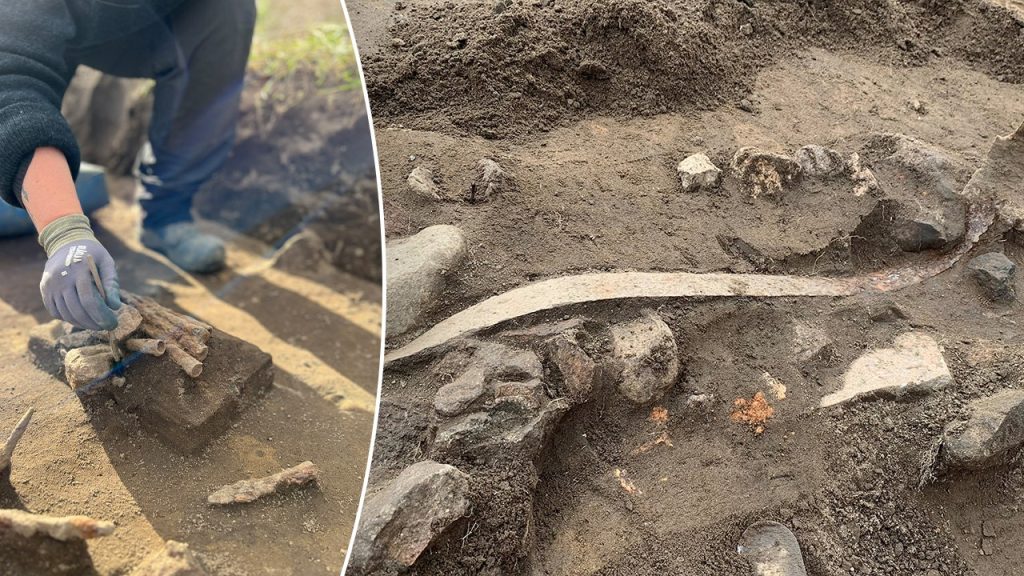Recent excavations near Hedensted, Denmark, have uncovered a remarkable cache of Iron Age artifacts, providing invaluable insights into the ancient past. The dig, led by archaeologists from Vejle Museums at a site known as Løsning Søndermark, took place during the expansion of a freeway and has revealed numerous items believed to have been intentionally buried thousands of years ago. This significant find is thought to be an offering to a higher power, likely buried by a chieftain, showcasing the site’s potential to enhance our understanding of early Danish society and its rituals.
Among the items unearthed during the excavation is a considerable assortment of weaponry, including 119 lances and spears, eight swords, five knives, three arrowheads, and a variety of other tools and artifacts. Archaeologist Elias Witte Thomasen remarked on the extraordinary nature of the excavation, noting that the quantity of weapons discovered was sufficient to equip a small army. He emphasized how this find casts light on daily life and societal structures during the Iron Age, indicating a robust warrior culture and its implications for social organization and power dynamics of the time.
One of the standout artifacts found is a rare piece of chain mail, a type of armor typically worn by knights or elite warriors. This intricate armor was crafted by sewing iron rings into fabric or leather, a labor-intensive process that signifies the high status of its owner. The presence of such sophisticated military gear at the site suggests not only the importance of warfare during the Iron Age but also highlights the resources accessible to local chieftains, underpinning their authority and influence within their communities.
In addition to the weaponry and chain mail, the excavation revealed fragments of two bronze neck rings—valuable items that reinforce the idea of the chieftain’s power and wealth. These artifacts contribute to the narrative of a hierarchical society where such items represented both status and the wealth necessary to command allegiance. Moreover, the discovery of various unidentified bronze and iron objects indicates that the site was a significant center of activity during its time, fostering production and possibly trade of such valuable goods.
Archaeological analysis of the uncovered items continues, as experts work to piece together the broader context of this remarkable cache. The findings may serve not only to enhance our understanding of Iron Age culture in Denmark but also to inform our comprehension of the interaction between social customs and the material culture of the period. As studies advance, insights into ritualistic significance, technological advancements, and societal hierarchies during the Iron Age stand to emerge, enriching the historical narrative of northern Europe.
Furthermore, plans are being made to exhibit some of these archaeological treasures at the Vejle Cultural Museum in early 2025, which will allow the public to engage directly with this fascinating chapter in Denmark’s prehistory. Such exhibitions are vital for fostering dialogue about heritage and history, allowing contemporary society to reflect on the evolution of culture and civilization from ancient epochs. The Hedensted excavation not only enriches academic understanding but also draws a connection between past and present, illustrating the enduring legacy of the Iron Age in shaping human experience.

